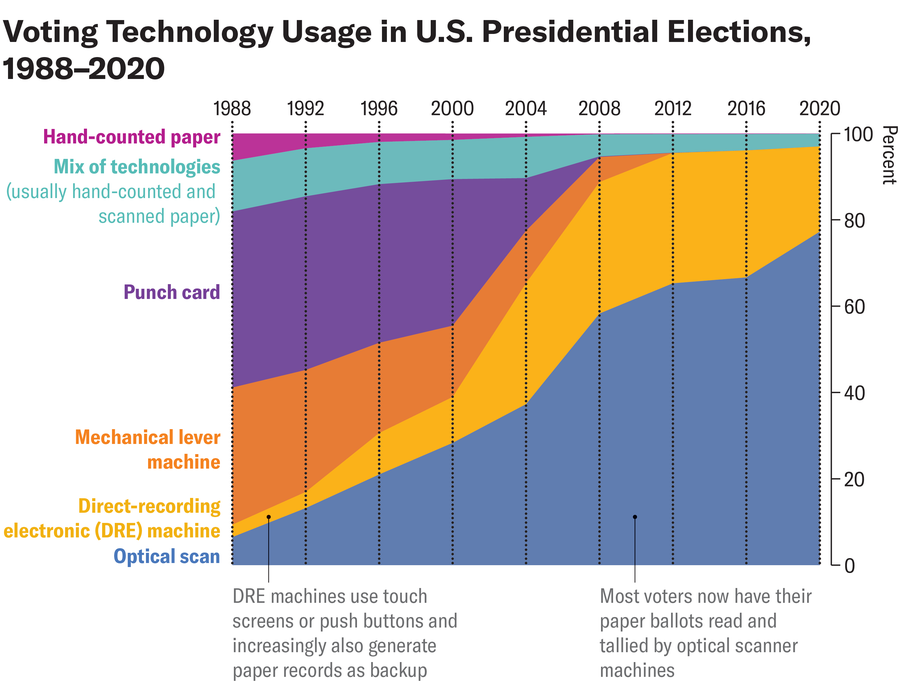CLIMATEWIRE | The Department of Energy announced up to $100 million in funding for carbon removal pilot projects Monday in an effort to advance technologies designed to suck CO2 directly out of the atmosphere.
While there are a variety of strategies that can be used to remove carbon from the air, both natural and technological, applicants are invited to focus on three specific kinds of pathways.
The first, biomass carbon removal, uses organic materials — including trees, other plants, algae or even animal products — that naturally draw carbon dioxide out of the atmosphere. The biomass can then be harvested and used to produce energy, paired with carbon capture and storage technology to snatch the emissions it produces before they go back into the atmosphere. Or it could be harvested and stored to keep the emissions contained.
On supporting science journalism
If you’re enjoying this article, consider supporting our award-winning journalism by subscribing. By purchasing a subscription you are helping to ensure the future of impactful stories about the discoveries and ideas shaping our world today.
The second pathway, mineralization projects, typically involve the use of crushed-up alkaline materials, like calcium or magnesium. When sprinkled over rocks, mixed into soil or incorporated into other kinds of chemical reactions, these minerals can help absorb carbon dioxide from the air.
The third opportunity calls for test bed facilities involving multiple carbon removal pathways combined. These could include both biomass and mineralization removal projects, but could also involve other strategies like direct air capture — machines that suck carbon dioxide straight out of the atmosphere.
DOE notes that a fourth funding opportunity, involving marine carbon removal projects, may also move forward in the future. Marine carbon removal also often uses crushed alkaline materials — but instead of being used on land, they’re sprinkled directly into the ocean.
Applications are due by April 16. Project periods can last up to three years.
The new funding is part of DOE’s Carbon Negative Shot initiative, which aims to scale up the potential of carbon removal technologies while simultaneously lowering their costs. The program’s goal is to develop carbon removal pathways that can capture carbon dioxide at the gigaton scale — meaning they’re capable of pulling at least a billion metric tons of CO2 — at less than $100 per ton.
The DOE initiative is part of a wider Biden strategy to advance the U.S. carbon removal industry, which could help steer the administration closer to its goal of achieving net-zero carbon emissions by 2050. Carbon removal can help offset residual emissions from difficult-to-decarbonize sectors, and the U.N.’s Intergovernmental Panel on Climate Change has stated that at least some carbon removal is “unavoidable” if the world is to meet the Paris Agreement’s climate targets.
The new funding “will help accelerate the commercialization and wider deployment of technologies that are essential, not only to achieving the Biden-Harris Administration’s net-zero goals, but also to enabling the clean-up of legacy emissions thereafter,” said Brad Crabtree, DOE’s assistant secretary of fossil energy and carbon management, in a statement.
Much of the federal focus to date has centered on direct air capture, which remains a small and expensive industry. The bipartisan infrastructure law, passed in 2021, included $3.5 billion to fund the development of four direct air capture hubs in the United States. Last August, DOE announced $1 billion for the first two funded projects, along with an additional $100 million in matching funds for 19 other direct air capture proposals.
Still, direct air capture accounts for a tiny amount of emissions reductions. The country’s first commercial direct air capture plant just opened in California in November, built by Heirloom Carbon Technologies, with the capacity to remove only about 1,000 tons of carbon dioxide from the atmosphere each year. In general, direct air capture often costs hundreds of dollars to remove a single ton of CO2 from the air.
The Carbon Negative Shot initiative, meanwhile, aims to support the development of a variety of pathways. The new funding may be a boon to the burgeoning U.S. carbon removal industry.
“Today’s announcement is critical for carbon removal companies, who can struggle to raise capital for first-of-a-kind projects,” said Giana Amador, founder and executive director of the Carbon Removal Alliance, a trade group that advocates for carbon removal companies, in a statement.
Yet, carbon removal remains a controversial field.
Most removal pathways don’t yet exist at a commercial scale large enough to make a meaningful dent in the world’s carbon emissions. While some experts argue that the industry needs more investment, others worry that focusing on the promise of an unproven industry could distract from more meaningful global emissions reductions efforts.
Reporter Corbin Hiar contributed.
Reprinted from E&E News with permission from POLITICO, LLC. Copyright 2023. E&E News provides essential news for energy and environment professionals.














